
Afterglow from Neutron Star Merger GW170817
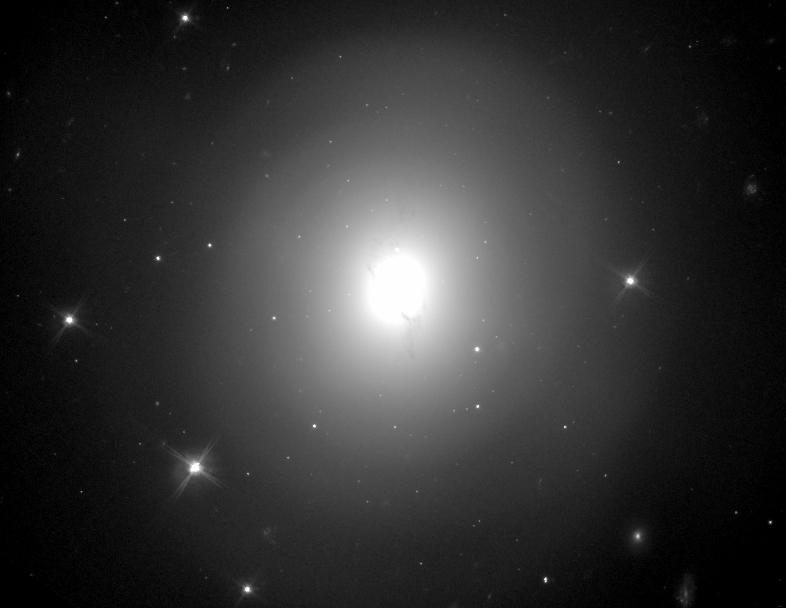
Afterglow from Neutron Star Merger GW170817
Neutron star merger (GW170817) and its afterglow, in relation to the brightness of the nearby galaxy (center). Learn more.
Wen-fai Fong/Northwestern University


Neutron star merger (GW170817) and its afterglow, in relation to the brightness of the nearby galaxy (center). Learn more.
Wen-fai Fong/Northwestern University
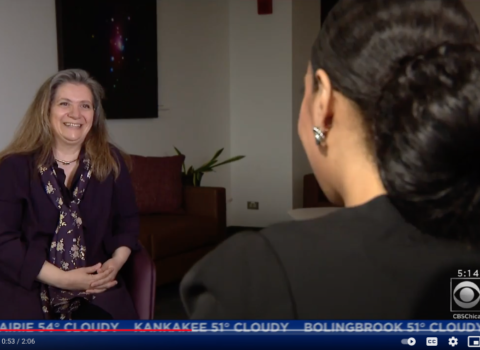
Vicky Kalogera is a professor of physics and astronomy at Northwestern University and Director of the CIERA Center – leading research, studying the cosmos and making new discoveries. This interview is a special Women’s History Month 2021 segment for CBS Chicago.

Maya Fishbach uses gravitational waves to probe the universe’s most extreme objects — black holes and neutron stars. Her research aims to understand where, when and how these systems of merging compact objects are made. As a member of the LIGO Scientific Collaboration, she analyzes gravitational-wave data to study the population properties of colliding black
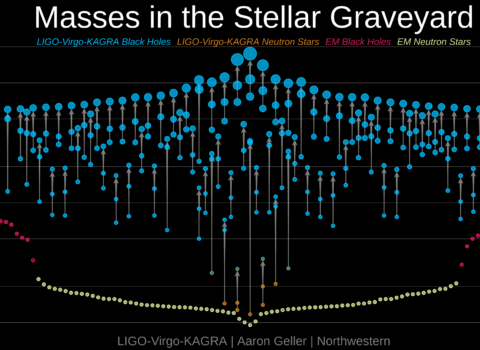
This animation shows the increasing sample of gravitational wave sources, starting before LIGO-Virgo-KAGRA went online (with only electromagnetic, EM, sources) and then moving through the three main data releases that are now available (GTWC-1, GWTC-2.1, and GWTC-3). Watch as the sample of merging black holes and neutron stars has dramatically increased over the past few
Visualization: LIGO-Virgo-KAGRA / Aaron Geller / Northwestern
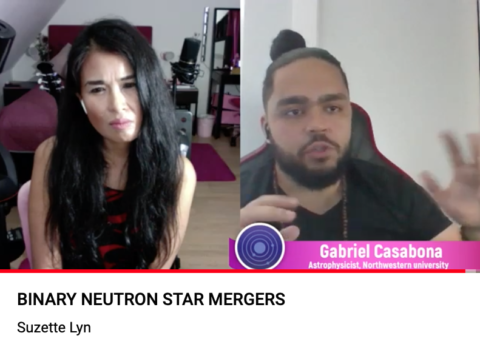
Gabriel Casabona, a theoretical astrophysicist who specializes in binary neutron star mergers, gives an interview with Suzette Lyn.
Suzette Lyn

This movie demonstrates the propagation of a relativistic jet following the Neutron star merger GW170817. Credit: Ore Gottlieb
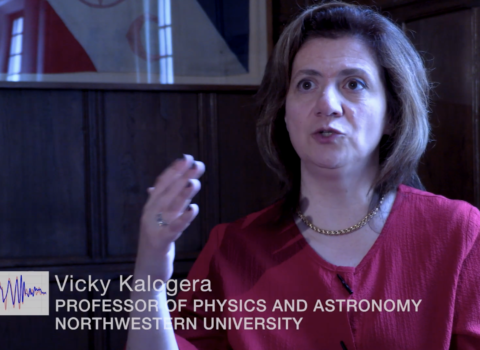
Episode 8 of the documentary series “LIGO: The Discovery that Shook the World” features CIERA Director Vicky Kalogera discussing the science of future LIGO instruments (the detectors that observe gravitational waves). All 8 episodes can be found on YouTube.
The Advanced LIGO Documentary Project was a collaboration among Caltech, MIT, the LIGO Laboratory and director Les Guthman that made the feature documentary, “LIGO,” and the eight-part video series, THE DISCOVERY THAT SHOOK THE WORLD, about LIGO’s major gravitational wave discoveries 2015-2017 and the birth of the new era of gravitational wave astronomy.
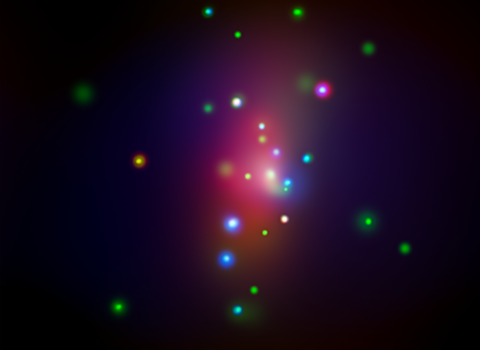
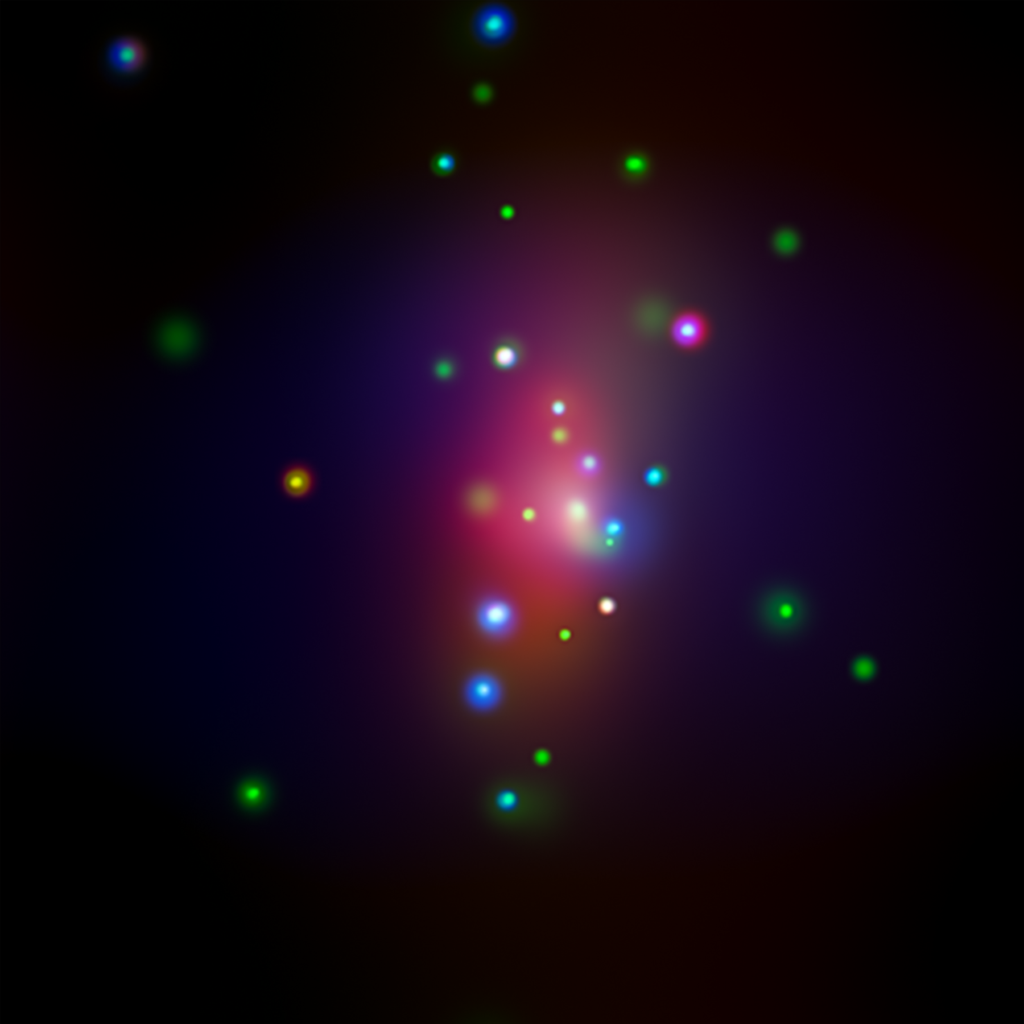
This image from NASA’s Chandra X-ray Observatory shows spiral galaxy NGC 7331, center, in a three-color X-ray image….

Andrew Connolly Public Lecture at the 2019 HotWired Conference in Evanston, IL.
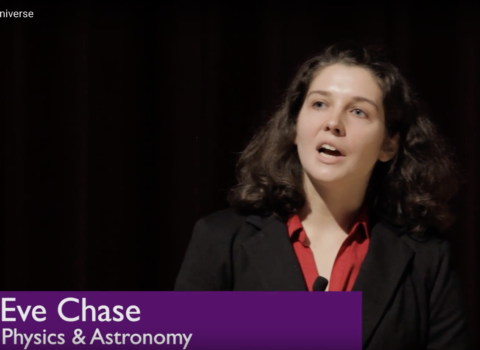
CIERA graduate student, Eve Chase, presents on her research as part of RSG Research Communication program.
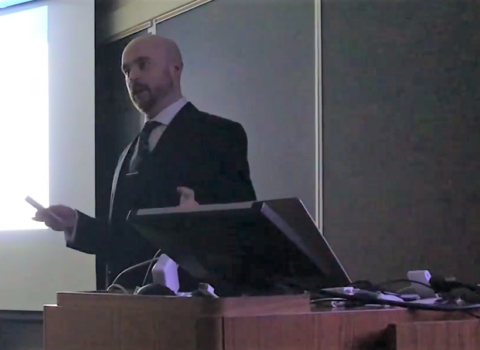
Dr. Christopher Berry, a gravitational wave astronomer of CIERA and the LIGO scientific collaboration, presents his research in a public lecture. The lecture discusses gravitational waves and their detection, black holes, and Dr.Berry’s research. – – – Visit Christopher Berry’s website: www.cplberry.com
Christopher Berry / CIERA
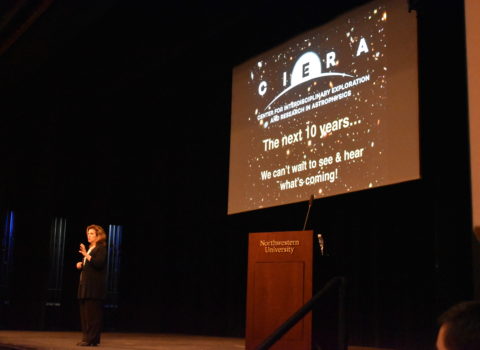
CIERA’s 10th annual public lecture was presented October 11, 2018 by director Vicky Kalogera. Kalogera’s talk–a glimpse into the years of fascinating work conducted by CIERA–highlighted key discoveries and what they mean for the future of astronomy. Kalogera discussed the lives of stars, how their influence on the Cosmos has changed in the recent decade,
CIERA / Northwestern
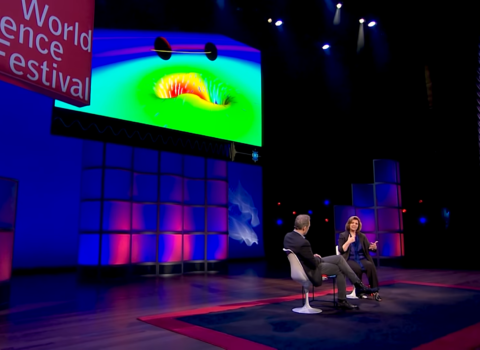
Black holes may hold the key to understanding the most fundamental truths of the universe, but how do you see something that’s, well, black? Astronomers think they have the answer. Thanks to a global array of radio telescopes that turn the Earth into a giant receiver, we may soon have the first picture of the
World Science Festival

Filmed at the Chicago History Museum as part of The Phi Betta Kappa Society’s (En)Lightning Talks Chicago event series. Vicky Kalogera is a professor at Northwestern University, and the co-founder and director of CIERA.
The Phi Beta Kappa Society
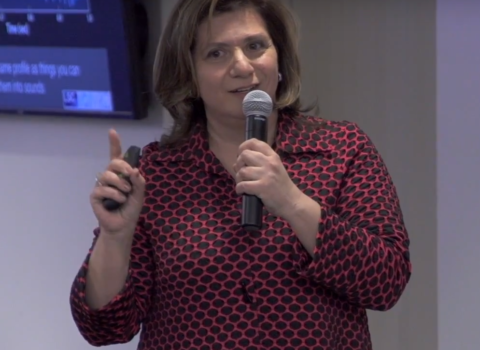
CIERA director Vicky Kalogera discusses her work and the recent discovery of evidence of the existence of gravitational waves in the universe.
The Chicago Network
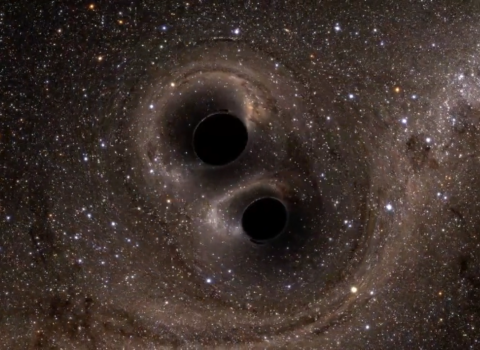
Northwestern

LIGO – Virgo discovery marks first cosmic event observed in both gravitational waves and light. Announcement made at the National Press Club, Washington, DC. Panel with representatives from various telescopes, begins at 51:21 (Please note that Marica Branchesi’s institutional affiliation is incorrectly indicated in the video. The correct affiliation for Dr. Branchesi is Gran Sasso
NSF / LIGO-Virgo

This simulation shows a binary-binary encounter involving four black holes, which can occur at the cores of dense stellar systems such as gloublar clusters. Such encounters can lead to long-lived “resonating” interactions, through which many temporary binary systems are created. By incorporating a more accurate description of Einstein’s gravity in the equations of motion, the formation
Mike Zevin / Northwestern